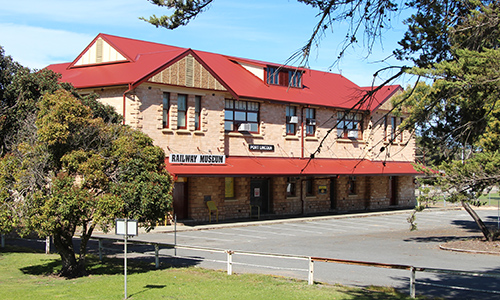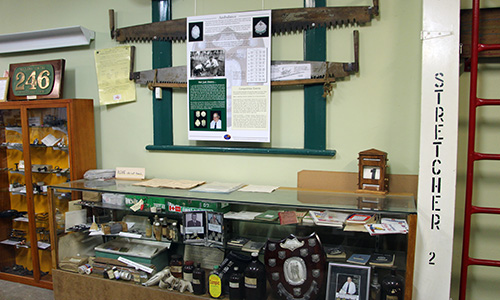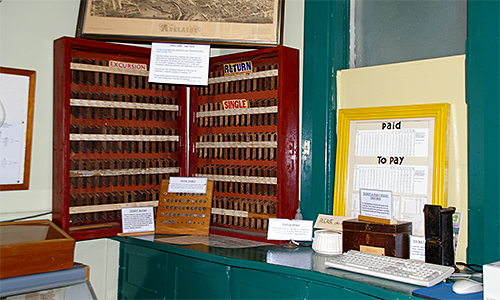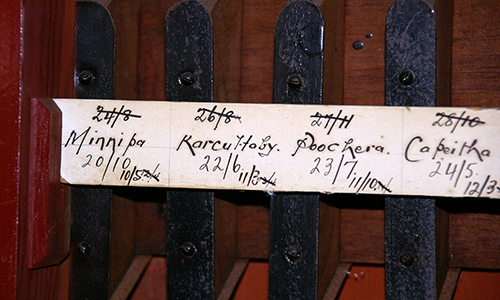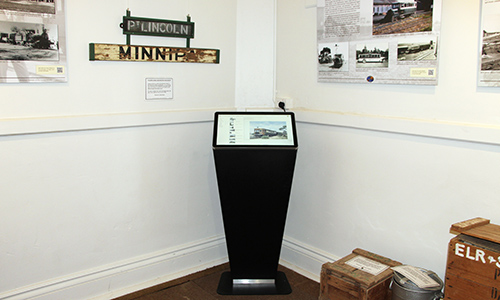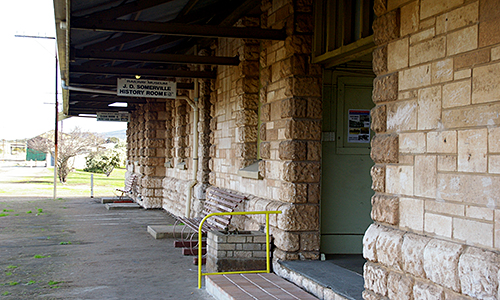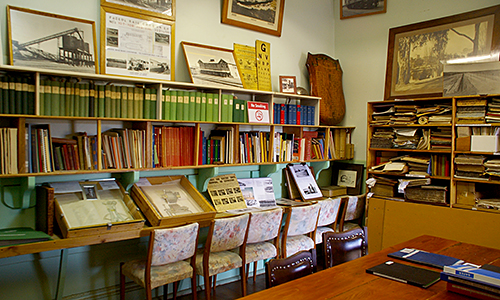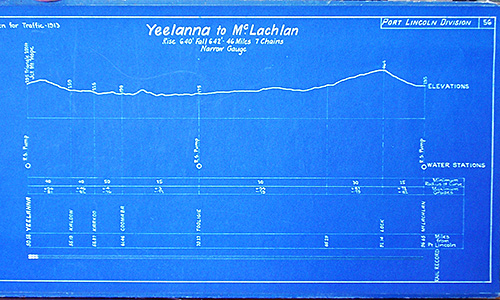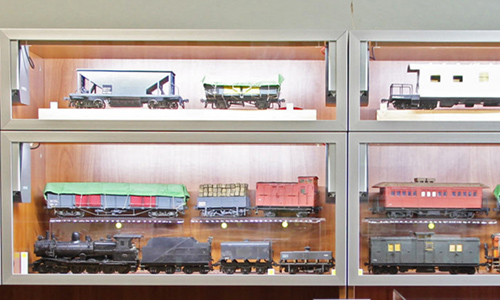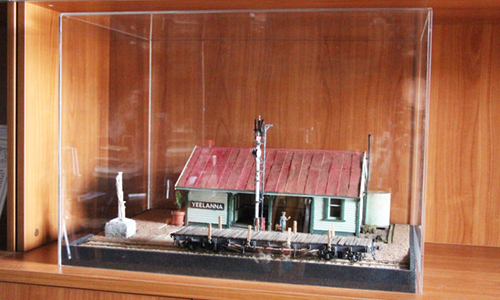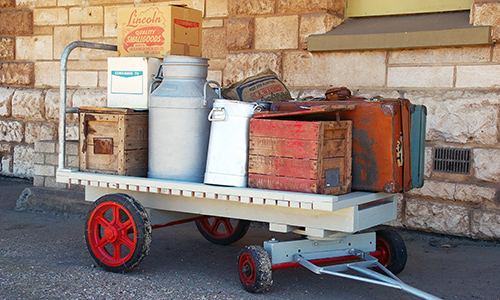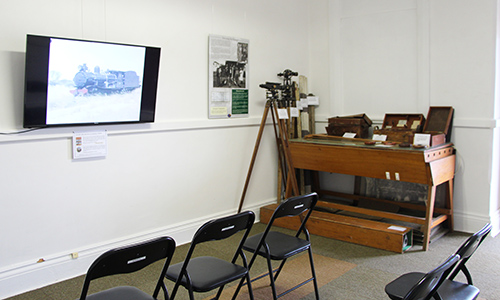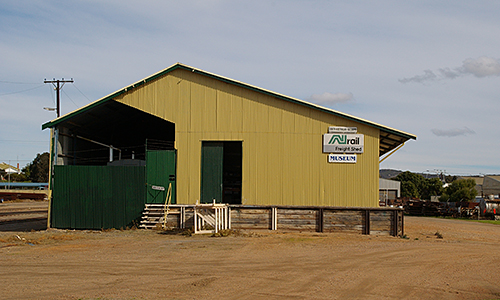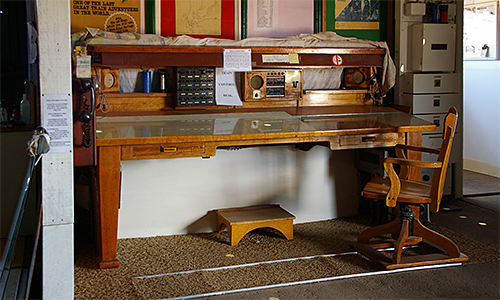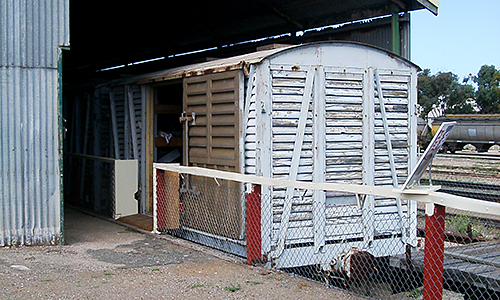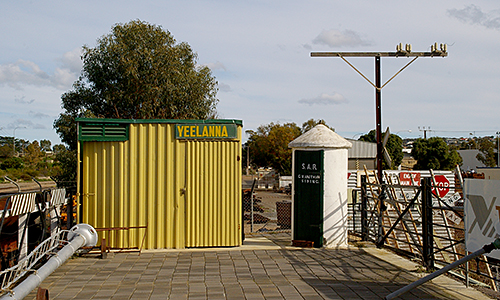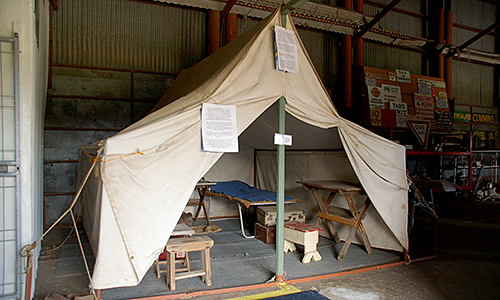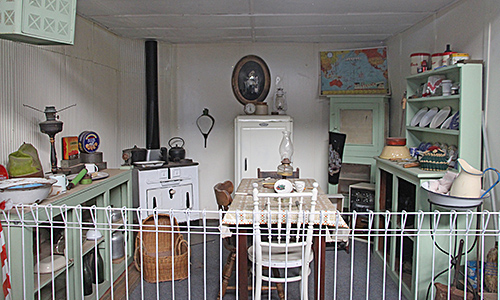| Home | Museum | Going Loco | Membership | Volunteers | History | Governance | Books & Souvenirs | Used Books | Contacts | Find Us | Links |

Port Lincoln Railway Museum
The Museum is housed in several rooms in the stone station building, with larger items displayed in the nearby freight shed. Most of the rooms are in their original condition.
Visitors enter the museum via the former parcels office. Many smaller items are displayed here on the old parcels racks and in other cabinets. The former ticket office still includes the ticket window, Edmonson date imprinter and ticket rack still showing pre-decimal currency prices. Passenger services are described in a series of panels located in the old porters' room. The J.D. Somerville Reading Room houses photo albums, books and a large array of research material, as well as the Ralph Holden Collection of superb 1:32 scale models of Eyre Peninsula locomotives, railcars and rolling stock. Take a break in our theatrette, where interesting video presentations are on permanent rotation.
The museum archives contain an extensive and growing collection of photographs of railways on Eyre Peninsula, and the people associated with them. The archives also have extensive documentary material dating back to the construction of the first railway at Port Lincoln in 1906-07, as well as a collection of engineering drawings for the same period. Researchers, and people whose family history includes railwaymen on Eyre Peninsula, will find much of interest in these records. Many of the images are available for viewing on our self-serve image kiosk.
Other displays include rail workers’ uniforms and a vast array of memorabilia. In the freight shed annexe are a number of items of rolling stock, some of which were unique to Eyre Peninsula. There are also some rail vehicles which were originally used in the construction of the Trans Australia Railway almost a hundred years ago; these last worked on the BHP lime sands tramway at Port Lincoln.
Museum Opening Hours
- Every Wednesday year round, 1pm - 4pm (except Good Friday and Christmas Day).
- Most Sundays in SA school holidays, 1pm - 4pm.
- 8:30am - 4:00pm on days when cruise ships are in town (except for ships with fewer than 1,000 passengers).
Admission
- $8 Adult
- $6 Concession
- $3 Children 12-17
Visa, Mastercard and EFTPOS accepted.
Further Interest
 Selected items from the Museum's archive collection of photographs, maps and plans are now available online via Trove. You can browse these Museum items on Trove
here, or just go to
Trove and search "Port Lincoln Railway Museum" in Pictures and Maps. See also tips on searching EPRPS on Trove.
Selected items from the Museum's archive collection of photographs, maps and plans are now available online via Trove. You can browse these Museum items on Trove
here, or just go to
Trove and search "Port Lincoln Railway Museum" in Pictures and Maps. See also tips on searching EPRPS on Trove.
Peter Knife has been privileged to present a talks to the Royal Geographical Society of South Australia on the railways of Eyre Peninsula and their role in the settlement of the Peninsula, and to the Light Railways Research Society of Australia via Zoom. Links to these can be found on the Links page.
